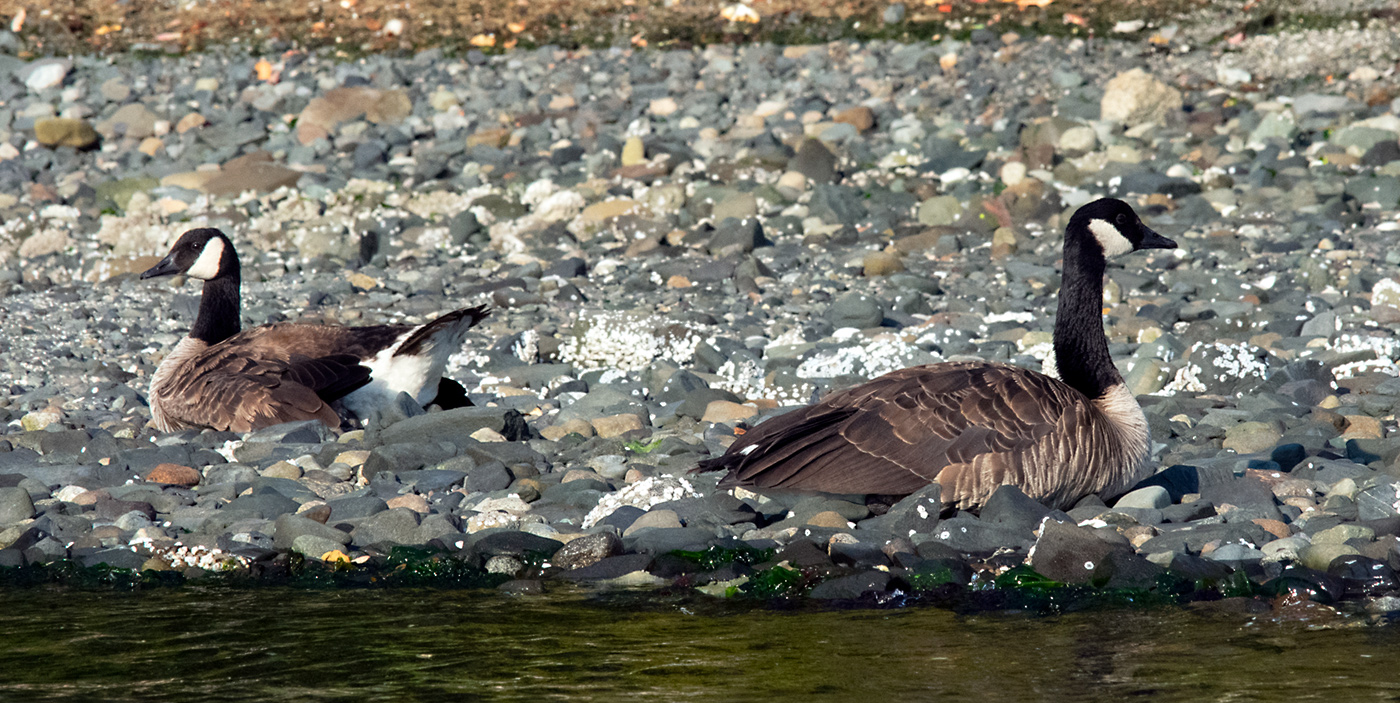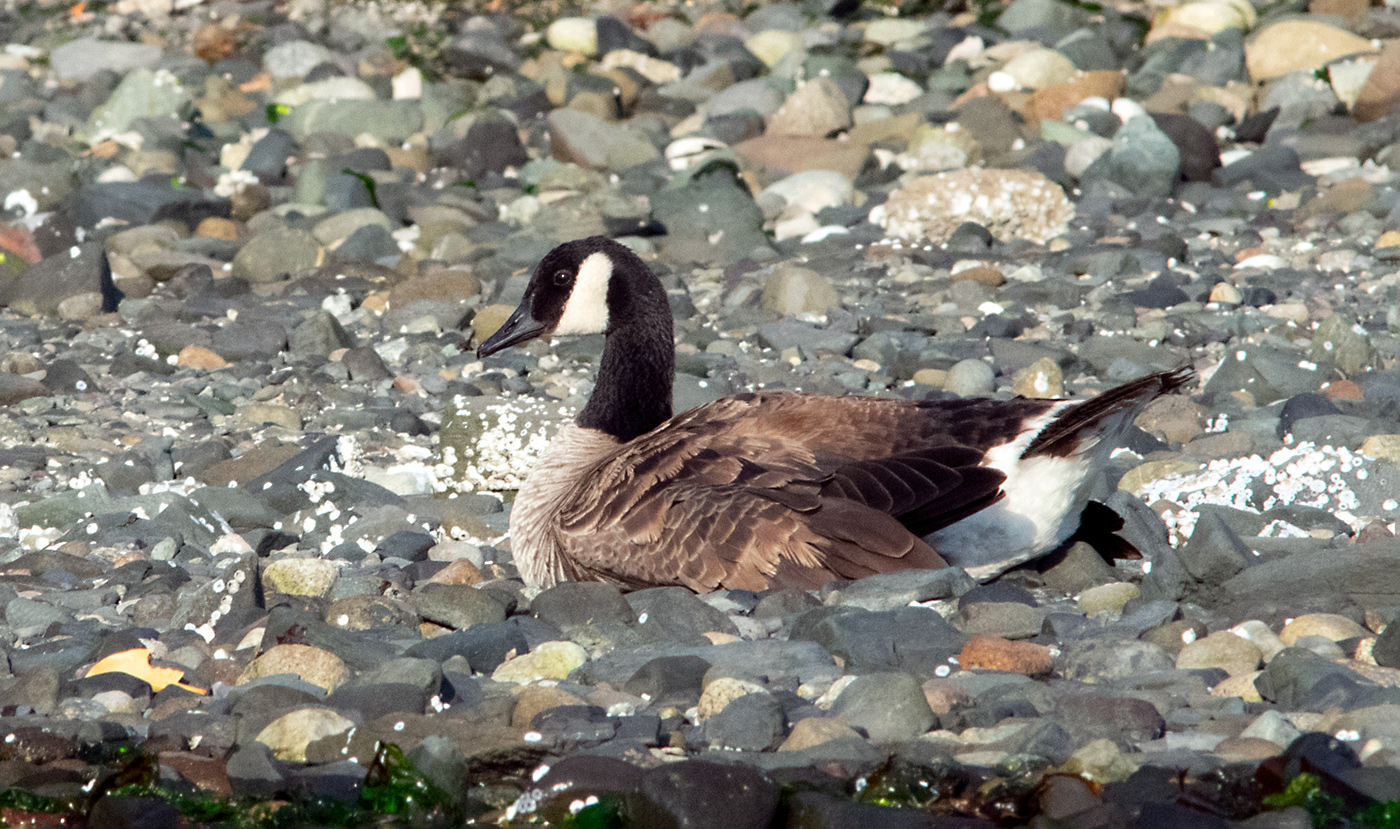Canada Goose
Author: Coen del Valle
Photos by Patrick Dann
Scientific Name: Branta canadensis
Size Range: 76-110cm
Identifying Features: The Canada Goose is a large waterfowl most recognizable for its long, black neck and white cheeks and chinstrap. Due to its dependence on water, it has webbed feet to aid its swimming. It’s head and neck are primarily black, they have a tan breast and a brown back. They also have wide flat bills used for grooming and grazing.
Habitat: Canada geese are migratory birds with most living in the southern states during the winter and moving to Northern Canada to breed during the summer. There is also a portion of their population which does not migrate; these geese stay in Coastal B.C., Northern U.S.A., and Northern Mexico year-round. Canada Geese prefer to inhabit large, open, grassy areas, with bodies of water nearby (within 5 acres). These features are often found on golf courses which is why Canada Geese often are found there.


Food: Branta canadensis is a grazing species. They prefer grasses, sedges, grains, berries, seeds and roots. They have also adapted to enjoy farm-grown crops such as corn, winter-wheat, millet, oats, soybeans, green barley, rye, alfalfa, clover, and sorghum. They also eat white and yellow water lilies, pondweed, and milfoil. To aid their digestion they ingest gravel. This gravel remains in the gizzard and helps them to break down their food.
Predators: Due to the large size of the Canada Goose it has very few predators. However there are a few animals that will prey on goslings and eggs such as red foxes, common snapping turtles, raccoons, and Virginia opossums. Another common predator is the human with approximately 500,000 hunted and killed each year.
Life Cycle: Branta canadensis can live up to 25 years. Within this time each goose will find a mate and stay with it for the rest of their lives (unless separated or one dies). The female goose will choose its mate based on how well the potential mate can protect her. Canada geese start mating at around 3 years old. They reproduce in spring and lay a clutch of 4 to 8 eggs. The female geese build the nest and incubate the eggs while the males defend the nest. The incubation period lasts around 23-30 days. The newborn Canada geese, called goslings, are small, with bright yellow and brown markings.
Human Interaction: The Canada goose population is on the rise due to the way we are modifying our wild environments. We have large farms that geese will eat off of, and an expansion of large grassy areas such as golf courses. These changes in the wild landscape make for great breeding grounds and feeding grounds for the geese. In an effort to control Canada Geese populations many programs are set up to frighten the birds away or where volunteers search out nests and shake the geese eggs in order to reduce the numbers of goslings hatching.
References
Beckwith, K. (2009). Canadian Goose. Retrieved April 24, 2013 from bioweb.uwlax.edu/bio203/s2009/beckwith_kayl/index.htm
The Cornell Lab of Ornithology. (2011). Canada Goose. All About Birds. Retrieved April 23, 2013 from www.allaboutbirds.org/guide/canada_goose/id
Fairfax County Public Schools. (2013). Canada Goose. Study of Northern Virginia Ecology. Retrieved April 24, 2013 from http://www.fcps.edu/islandcreekes/ecology/canada_goose.htm
McClary, R. (2004). About Canada Geese. Citizens for the Preservation of Wildlife, Inc.Retrieved April 23, from http://www.preservewildlife.com/geeseworld.htm
National Geographic. (2013). Canada Goose. National Geographic. Retrieved April 23, 2013 from http://animals.nationalgeographic.com/animals/birds/canada-goose/
Wiland, L. (2007) Canada Goose. Migratory Birds of the Great Lakes. Retrieved April 24 from http://www.seagrant.wisc.edu/birds/canada_goose_intro.html

